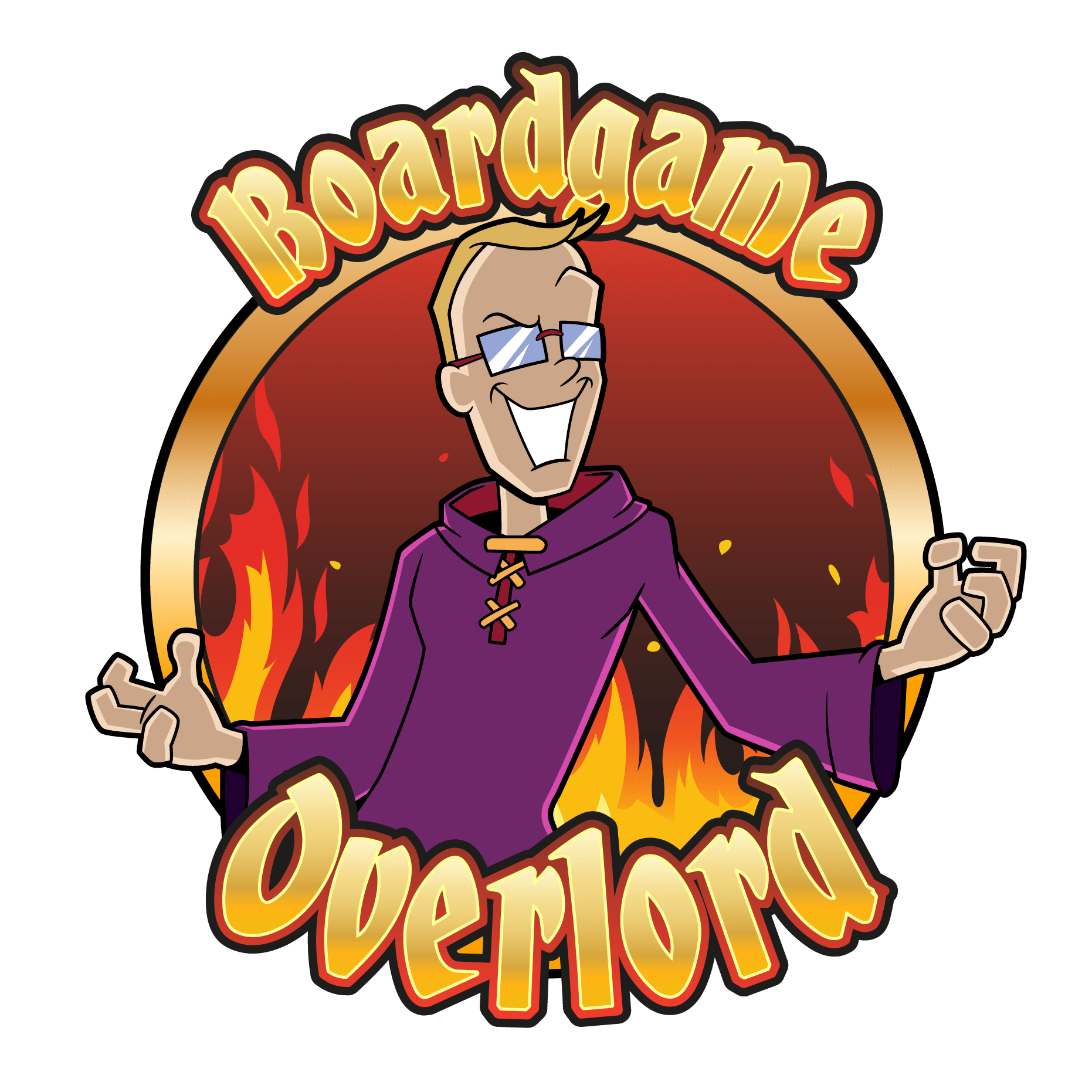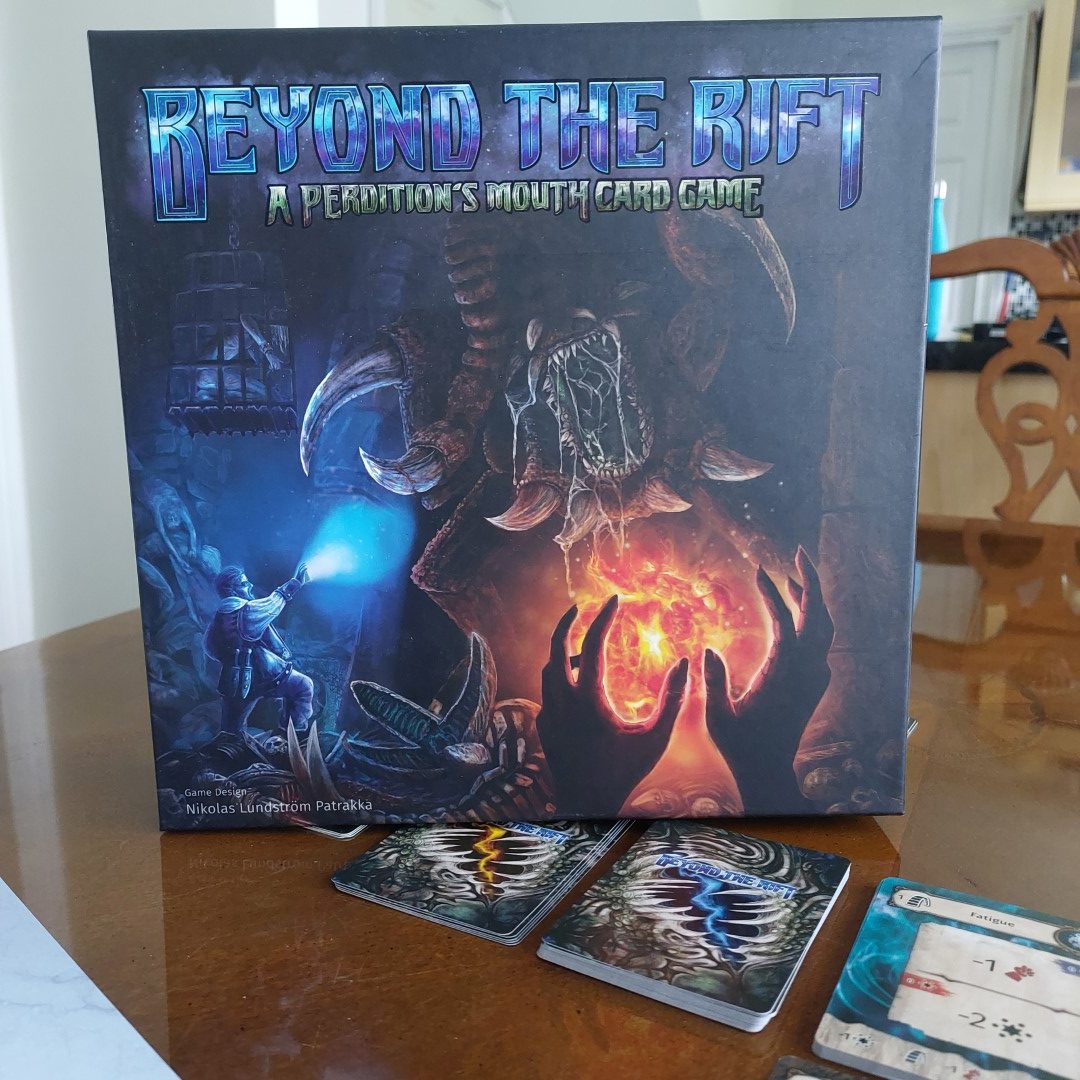I’ll be honest Beyond the Rift : A Periditions Mouth Game (referred to as Beyond the Tift from here on) has sat on my shelf since February 2024, and I’ve been trying to get review plays in of it ever since. But when everyone I’ve asked has 0 interest in it, there feels like there might be a reason there. As someone who has played and sort of enjoyed Periditions Mouth, I was loosely interested to see what else was in store, but it hasn’t been high on my to play list.
However, taking a look at some of the “youtube reviews” of this game, I struggled to actually find one that went into more than just a “this is how you play” with little conclusion or thoughts at the end.
So Beyond the Rift has continued to sit, wait and ultimately I’ve now worked my way through 6 solo games of Beyond the Rift, which I assume someone will message me about to say that’s not enough time to offer an opinion. Noting I played Obsession 21 times before reviewing it and people questioned why I played it so many times and still didn’t love it. Red Rising I played 3 times and disliked and was called out for my “lack of plays”, 6 plays is somewhere not quite in the middle but probably offers me enough insight into the game and the mechanics. I can’t really comment on vastness of the campaigns, there’s basically 6 short campaigns split into three scenarios.
I will point out that I lost 4 of my 6 games, however, I just continued to progress into the next story chapter. After 2 tries of the first scenario and losing, I lowered the difficulty after my first play and after my second attempt, I decided that I would move onto the second chapter (this is obviously not the rules of the game, but I wanted to try more content). This was in part due to frustration with the some what very random response deck but also to allow me to see more content. Beyond the Rift takes place over a number of rounds, until you lose which could be due to a round limit, death or other effect or until you win by achieving the scenario goal.
You set a scenario difficulty level at the start of each game. Each round is broken into 5 phases, the Hero phase, Enemy phase, Quest phase , Draw and End phase.
The Hero phase is where the bulk of the game takes place as heroes can perform actions in any order. With the actions being (with varying costs):
Attack
Gain action points
Perform a special action
Pay action points to draw a card
Pay action points to discard wound/fatigue cards and draw new cards
Discard a card for an action point
Engage or disengage an enemy
Scenario specific things
Every hero has a different amount of action points, found on their hero dash board. And credit where credit is due, Beyond the Rift comes with 6 heroes to choose from, which feels like more than enough.
There feels like there’s a good amount of choice here for the heroes, however, there is so much iconography throughout every phase of the game it almost feels tedious. After the hero phase, you’ll resolve the enemy phase, which you’ll draw a response card and refer to the scenario table to understand the effect, it could be an attack, they could intimidate (force you to discard cards), resolve a scenario effect, heal, summon more monsters, support monsters engaged in combat and other effects. Terrain cards are generally (not not always) bad for example rubble increase the cost of actions and fire gives wounds to all, barricades prevent ranged attacks, innocents as a terrain feels thematically weird but they offer at least no negative effect from the scenarios I played. Although you may be tasked with rescuing them.
There’s a difference between enemy and hero attacks, they work largely the same way compare attack to defense value with the heroes having the opportunity to add shields through cards or action points, the enemy drawing response cards for shields.
But for hero attacks that are successful, the monster receives a wound card, for monster attacks the hero receives into their hand a wound card for each damage symbol on that monster (and at the start of the campaign, monstery often have multiple damage icons while heroes all have one). And all heroes base shield value is 0, where as monsters often (not always) have shield values! Importantly during the draw phase heroes can’t discard wound cards, and if they have a hand full of wound or fatigue cards after an enemy phase that’s pretty much game over. That is largely how I’ve found most of my games ending. I get that you have shield cards you can play, but the addition of a modifier to the enemy’s defence value, with very few minuses, 0 or 1s in the response deck means that you may need a super strong all in attack, which probably ought to be stronger than you think. Therefore, leaving you needing to balance strong attacks and retaining cards for shields.
But anyway after the enemy phase the quest phase takes place, which is effectively resolving the scenario effects which could be placing more monsters, or terrain or potentially another monster attack depending on the scenario.
There’s then a tiny bit of respite as heroes reset their action points and draw cards equal to their hand size, meaning if you haven’t played e.g. all 6 cards in your hand. You’ll draw 6 new cards and then discard down. And there’s a penalty to getting through your deck, as you’ll add fatigue cards as you cycle through. However, as mentioned above you can’t discard fatigue or wound cards from hand, meaning you can find yourself at the hands of the enemy and the response deck if there’s one too many good draws for the enemy, which ultimately feels frustrating.
The end phase is largely just a clean up and last resolution of effects before the next round begins.
Having worked my way through a couple of the scenarios, the addition of adding cards to your deck feels somewhat rewarding as you’re adding all multiples of that card to your deck. For example, the leather armour adds multiple cards to your deck and removes all the cards associated to your torso from your deck, allowing you to continously refine your deck over scenarios, which I found to be a nice reward, although I wish they were a bit easier to locate in the deck either by being sorted by number or alphabetically as it felt like I was just going through random piles of cards to find them. But some of the wording is confusing e.g. multiple scenarios say they are “the first scenario of the same campaign”, that’s technically not possible either one of them is not both.
However, this game to me feels frustratingly difficult and often it felt like I wasn’t to blame for the loss, although you probably could say, “Aaron you’ve played multiple games and you’ve mentioned above there aren’t many 1s, 2s or 0s in the response deck, so plan accordingly”. My response would be that you need to push through the scenario, which forces you to play cards and resolve actions, meaning you might have to spend the shield cards you could use for a defence as other things. The sense of reward is almost enough to offset this as your progress you’ll find not only items to upgrade, but heroes upgrade meaning they deal more damage but more likely than not they’ll have less action points to spend. And I’m not sure based on my plays that feels enough, as you can find yourself carrying some wounds between scenarios meaning thematically you’ve walked from one battle to the next without respite, but in terms of gameplay, it’s just another hurdle thrown in front of you.
But that’s not to say there isn’t a solid game here, I thought some of the mechanisms were once again unique and interesting, e.g. the detail of the wound cards is like Periditions Mouth, which is one thing that stood out for me. Another is the amount of variety in the characters scenarios and also the way in which the monsters resolve and act.
However, I feel like there’s a few gripes here that hold this game back, first the component quality is alright but the game desperately needs a better storage solution, the organsier comes with one divider down the middle and that’s it. There’s one baggie for cubes, the rest feels like organised chaos! And as much as the variety in enemy actions is a good thing, the amount of iconography and resolution, just feels like it’s not as smooth as it could be. In part that could be down to the layout of the rules and I’d say the same of the scenarios, I would have loved tabs on the scenario book to make it that little bit easier to find the scenario or at least the start of a new campaign.
Overall, you know I rate games on a scale of:
Buy or play
Wait for sale or play if you like game XYZ
Avoid
Beyond the Rift sits somewhere in the Play if you enjoyed Periditions Mouth (or are looking for a dungeon style card game), wait for sale and avoid. It feels familiar and almost refreshing for me to revisit that world again. Noting the enjoyment (and often frustration) from the board game, coming back to some familiarity with that same level of difficulty, horror and little twists on mechanisms was nice. However, ultimately, it’s hard to think of who I would otherwise recommend this game for, it could be a sales pick up if you’re in the market for a new card dungeon style game and are prepared for difficult/random luck! But if you were new to board games or enjoyed games that have a sense of strategy, without the elements of randomness then Beyond the Rift isn’t probably for you. If you could pick this up for maybe £20-25 and just wanted to try it, I’d say go for it! But I wouldn’t recommend this game at its £60+ RRP (although I’m not sure if that’s it’s RRP as its listed for between £46-£67 across several sites). Yes there’s alot of content here and there’s some interesting mechanisms, yes the publisher is small, but I can’t help feeling that unless you are familiar with Periditions Mouth or after a specific type of game it’s a hard sell indeed, in part due to the icon overload, randomness that can feel frustrating at times and general sense of “its just okay”.
Disclaimer: I was sent a copy of the game for my review network, which has since collapsed. I agreed to review the game and was not paid for this content. All thoughts are my own.

